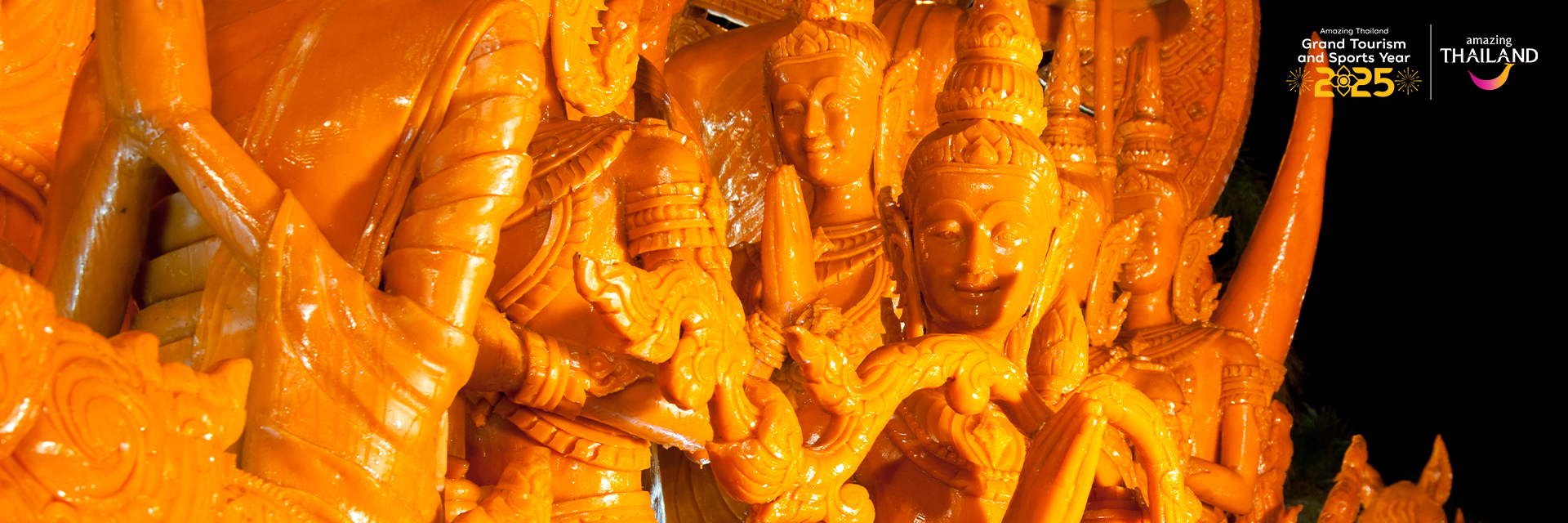The Candle Festival is a significant Buddhist tradition that has been a part of Thai culture for over 100 years, especially in Ubon Ratchathani province. It has become a highly popular tradition for both locals and tourists.
This festival is a story rooted in religious beliefs—a tale of faith, conviction, and customs passed down through generations. How did the flame of a candle, once a source of light for monks, gradually evolve into a candle parade that reflects the way of life of the people in the Northeast?

Initially, offering candles was an activity for Buddhists during the rainy season's Buddhist Lent. The main goal was to provide light for monks who had no electricity, enabling them to practice the Dharma during their three-month stay at the temple.
As time went on, many things changed with the times, as technology and modern conveniences became more common. Therefore, Buddhists had to find a clever way to ensure their community wouldn't forget the way of life of their ancestors while also adapting to the new social environment.
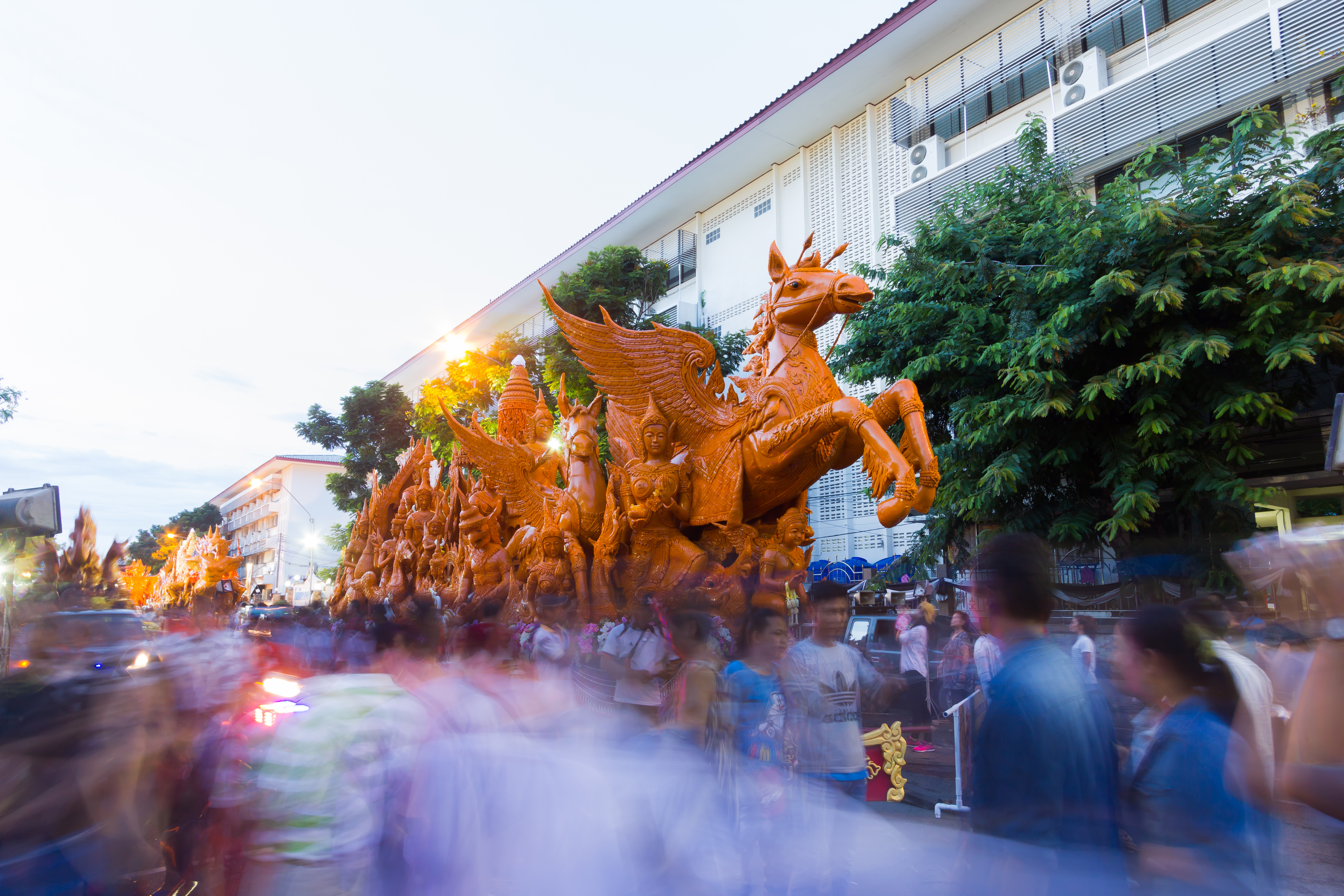
This very idea led to the transformation from offering candles to provide light for monks into the Candle Parade activity, which allowed villagers to express their own identity in a more entertaining way. It was a fusion of old and new ways of life, moving forward together.
The candle procession gradually changed over time. It began to be introduced as a festival between 1901 and 1936, during the time of His Royal Highness Prince Krom Luang Sanphasitprasong, the younger brother of King Chulalongkorn (Rama V). He wanted to transform the candle procession into the main festival for Ubon Ratchathani province, replacing the traditional Bun Bang Fai (Rocket Festival).
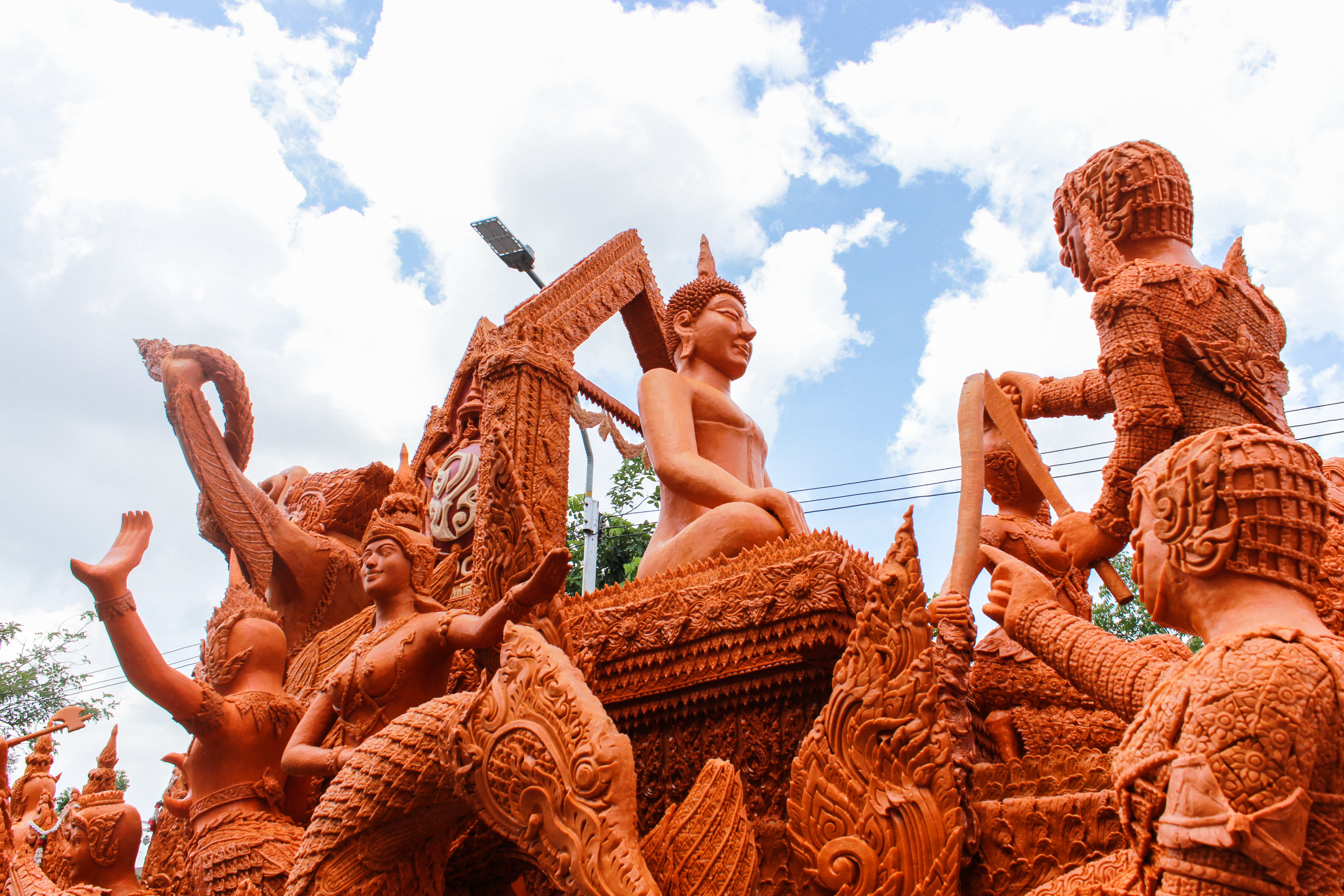
The slogan for the Candle Festival, "Melting Candles, Melting Merit, Melting Hearts," was then created. It was designed to give everyone in the community, regardless of social class, a chance to make merit together by using representative wax from each person to melt into one large candle. This activity brought the entire community together to participate in a shared event with a spirit of unity.
After the candle molding was complete, there would be all-night performances, followed by a joint almsgiving ceremony in the morning. Once all the activities were finished, villagers would beautifully decorate their ox and buffalo carts and parade the newly cast candles to various temples. Along the parade route, there would be traditional dancing and local performances to add to the festive atmosphere of the procession. This concept benefited everyone—the community, the villagers, and Buddhism—and has since become the main model for the Candle Festival today.
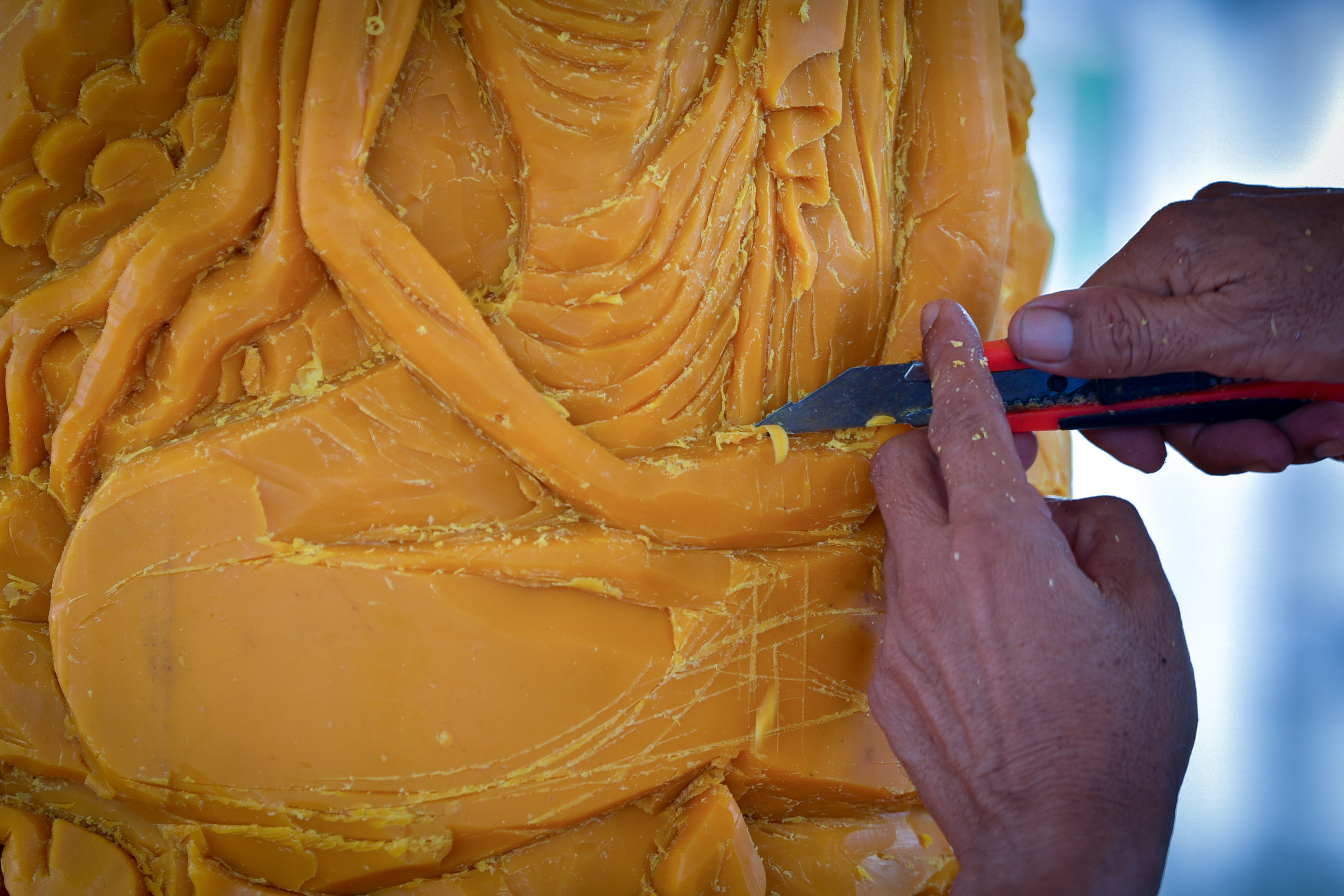
As time passed, candle carving became more prevalent, with beautiful shapes and designs being sculpted. This allowed villagers from each locality to develop their skills, eventually leading to carving competitions. Each parade procession grew more spectacular, and the local performances became more interesting and beautiful, so much so that both Thai and international tourists feel they must witness it for themselves at least once.
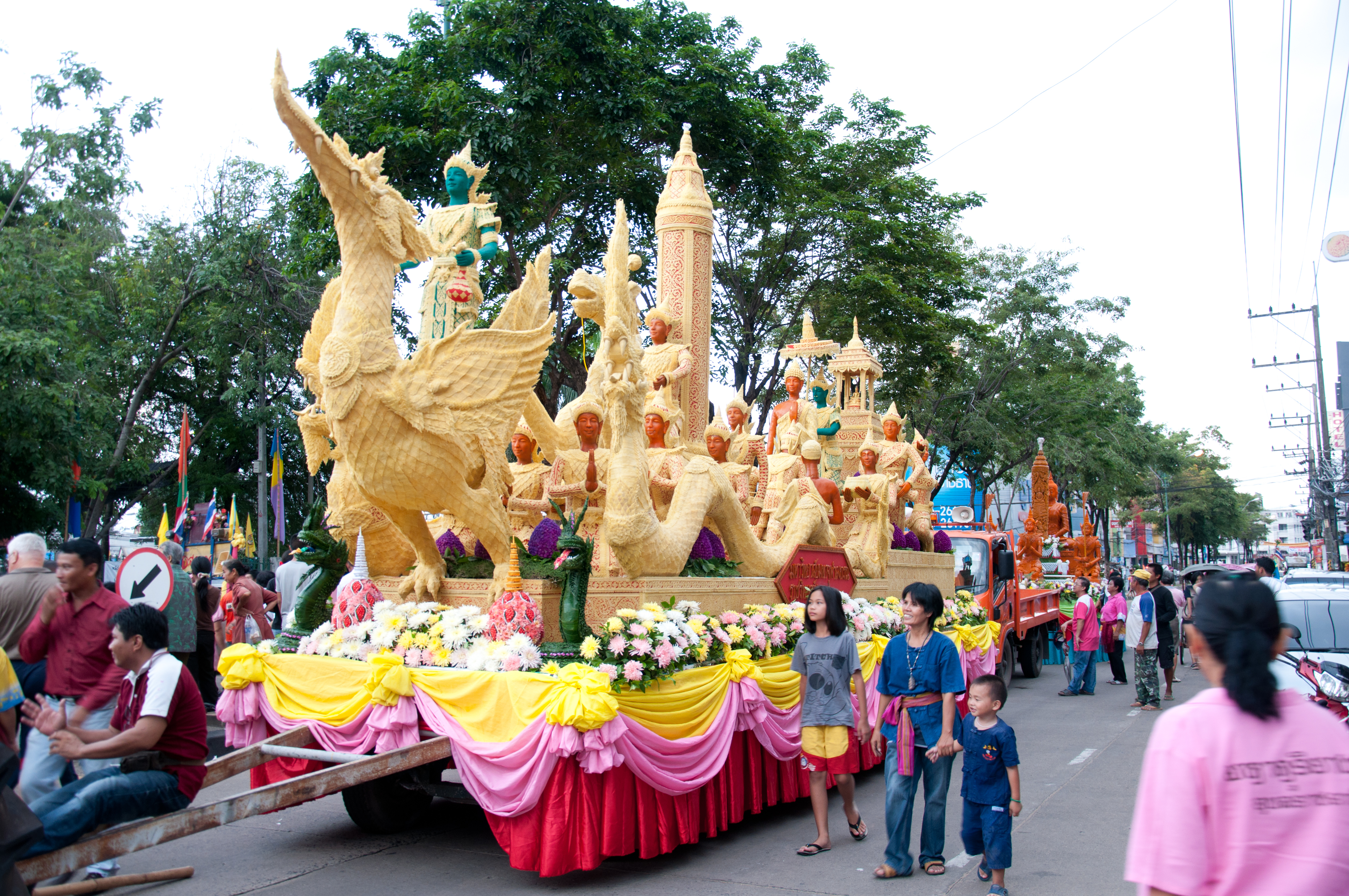
You can witness the stunning beauty of the candle carvings at the Ubon Ratchathani Candle Festival, which will be held this year from July 7-13, 2025. The spectacular cultural artistry of the Northeastern people is waiting for tourists to experience.


